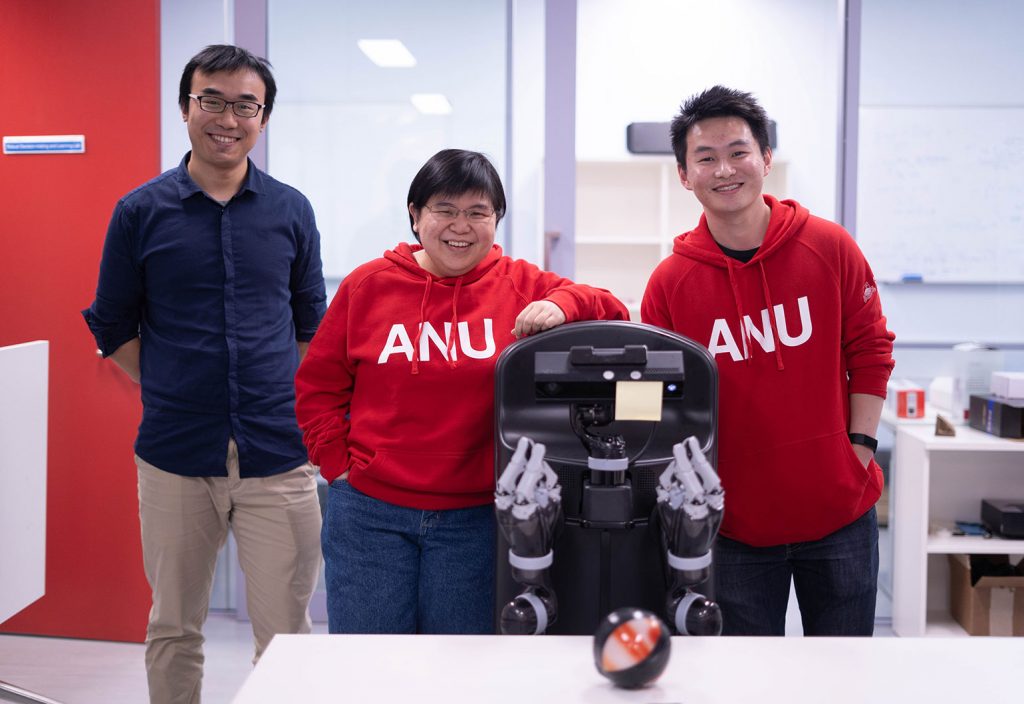More than a decade after Associate Professor Hanna Kurniawati authored a paper on robotic decision making, her research into developing smarter and more reliable robots has been recognised with an international award.
Kurniawati, from the Australian National University College of Engineering and Computer Science, received the Test of Time award at the Robotics: Science and Systems conference last month.
The award aims to recognise research more than 10 years old that has had the highest impact on robotics design or problem solving.
Kurniawati received the award for a 2008 paper she authored with researchers from the National University of Singapore.
The research, published in Robotics: Science and Systems IV, helps robots make decisions when they have limited or incomplete information.
Despite its age, and the rapid progress of robotics software in the subsequent 13 years, Kurniawati’s research has been used in a number of modern applications, from aircraft collision avoidance technology to self-driving cars.
Kurniawati said the award was particularly meaningful because for a long time many believed the concept she put forward wasn’t possible.
“People kept saying it’s not practical. So, to create the program and see that it was successful, and then to be acknowledged for it 13 years later is very humbling,” Kurniawati told create.
Standing the test of time
When robotics technology can stand the test of time, Kurniawati said, it becomes more reliable.
“If we are going to have robots in our daily lives then they need to be robust,” she said.
“Particularly if we want to create general-purpose robots that have multiple functions.”
When humans make decisions we filter through the relevant information we have and take action based on that. If we don’t have all the information we try to make the best decision we can.
Robots can’t make a ‘gut decision’ based on limited information. So, Kurniawati and her team had to come up with a way to program robots using the information they do have, effectively.
“Robust frameworks to solve such problems are known. But, they require a lot of computational power. For more than 40 years, people thought those frameworks were just nice theoretical results and completely impractical”, she said.

“What we did was to improve the computational efficiency, and essentially make them practical.”
The framework can help robots complete simple tasks, such as grasping an object when it doesn’t have the object’s exact location.
However, Kurniawati and her team from the ANU’s Humanising Machine Intelligence group see an even greater potential to assist robots in making ethical decisions.
“Humans can make decisions rooted in empathy, we take into account our concern for others,” Kurniawati said.
“It’s very hard to computationalise this. So that’s our next hurdle, seeing if we can make the concern of others into practical robotic consideration.”
The evolution of robots
Having spent more than a decade researching robotics, Kurniawati has seen a big shift in the public perception of artificial intelligence (AI).
“When I was starting, AI wasn’t as prominent as it is now. AI has become a household name now,” she said.
“I think AI goes through these ups and downs when it comes to excitement around its use. I think we were in the down cycle when we started but now we’re in a time of excitement.”
Kurniawati imagines consumer interactions with AI will only increase over the next decade.
“I can see AI playing a big role in organising our lives, our daily schedules. Perhaps looking after our elderly,” she said.
“The human and AI interactions are going to increase so we need to make sure our AI can work cooperatively with humans and make ethical decisions to keep us safe.”
